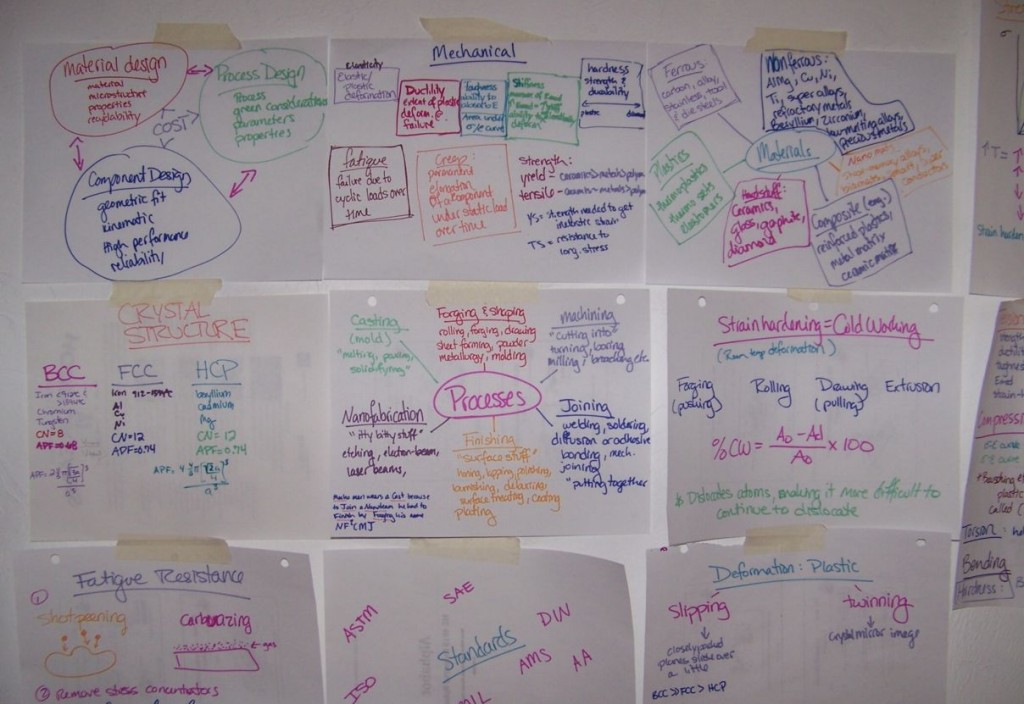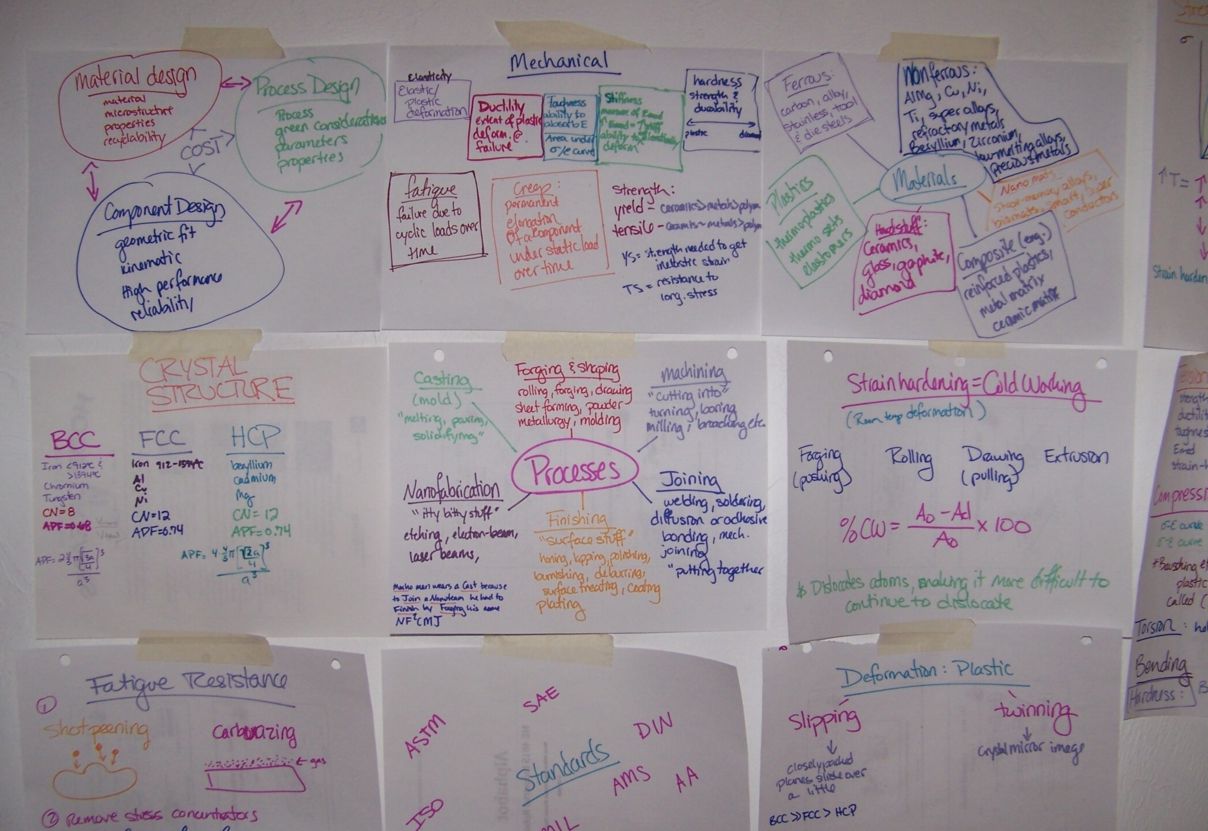Because for some of us neurodivergent thinkers — it’s a lifesaver

In November 2021, I wrote the article, How Mind Mapping Can Help You Connect with Neurodivergent Employees. In this article, I’m diving deeper into HOW to use the mind mapping metacognitive strategy.
I love mind mapping. It is easily one of my favorite methods for organizing information, brainstorming for projects, and problem-solving. It can be used for teaching just as effectively as it can for learning. It is an incredible tool for negotiating, finding solutions, and reaching compromises in the workplace
Mind mapping is truly a technique that can be applied to every aspect of life; work, school, home organization, and even social and emotional issues.
So, how do you do it?
Contrary to what many people imagine, mind mapping is not just spewing a bunch of random ideas onto a page. While it is an exercise anyone can do, mind mapping draws upon your instinct for connecting information and is best done with a bit of strategy.
I want to refer back to the case of Suzanne, who I have mentioned in a previous article. She is a neurodivergent worker who shared her story about how her managers used mind mapping to problem-solve some issues she was having at work. She found the process to be beneficial and at the same time, empowering.
Mind Mapping Explained: Problem-Solving in Three Easy Steps

#1. Identify the main concept or central theme of your mind map.
For Suzanne, multiple mind maps were required to resolve various issues. This is because each mind map should deal with one central theme.
Identify your central theme by asking yourself, what is the main idea that needs to be dealt with? If you are problem-solving, like Suzanne, your central theme will be the specific issue you seek to solve, such as being short-tempered, lacking patience when dealing with coworkers, or causing tension in the workspace.
If you are trying to learn (or teach) new information, the central theme or main concept is self-explanatory — it is the main idea of the information you are trying to assimilate or convey.
Write this down. This will be the center of your mind map. If it helps, draw a circle around it or some other shape. Maybe highlight it with an attention-catching color. You might even want to go so far as to give it its very own sticky note. Tap into your creativity to help visually connect to the central concept you want to address.
The best thing about mind mapping is that you can use whatever materials you have on hand or whatever inspires you. Use an app, a whiteboard, a giant notepad, or just a plain sheet of paper to create your mind map. Do whatever works best for you to get that main concept down, front and center.
#2. Identify themes that are directly related to the main concept. These will be your primary branches.
Continuing with Suzanne’s example, which has a specific goal of problem-solving, the next step is to look at the ‘why’s’ or the circumstances that surround or trigger the problem.
In Suzanne’s case, she might list an afternoon energy crash, frustration with her coworkers’ communication methods, and irritation about being interrupted as the main reasons for her lack of patience when interacting with them.
Each of these issues will be a branch off of the main concept. For problem-solving mind mapping, these branches typically explain the “why” at the root of the problem.
If you are creating a mind map for teaching or learning, on the other hand, these branches will provide the main supporting themes that back up or link to the central concept.
#3. Explore each supporting theme in depth by discovering associated concepts.
This is your opportunity to dig deep. Let’s take the magnifying glass to Suzanne’s issue with her afternoon energy crash; we could discover that she might need to incorporate physical movement into her daily routine. Maybe she would benefit by eating an earlier or later lunch. In the end, only Suzanne knows, and this is her opportunity to lay out ideas for possible solutions to counteract that afternoon energy crash.
This third layer is essentially where the problem-solving starts. Suzanne can use this same discovery process to figure out ways she could help her coworkers more effectively communicate with her and possibly find ways to minimize interruptions.
When it comes to teaching or learning, these associated concepts are the crux of any lesson. They are the details that build up to the main conclusion or central theme.
Why Mind Mapping Works

When teaching mind mapping, I like to think of it as building a pyramid from the top down. You start with the “big idea” first, and then fill in all the supporting information.
This way of looking at things is helpful because connections between seemingly unrelated subjects suddenly become clear. For learners, it is a visual method to conceptualize how different ideas are tied together. For problem-solving, solutions that may not have been immediately apparent suddenly become glaringly obvious.
Mind mapping helps support meaningful learning and strengthen your overall depth of understanding (Liu, Ying & Zhao, 2014). This is particularly true when it comes to learning complex information or resolving complicated situations. It is an activity that helps create structure within understanding.
Mind Mapping for a Neurodiverse Workplace

When it comes to supporting a neurodiverse workforce, mind mapping should be considered an indispensable tool.
For divergent thinkers, it creates an effective alternative to the neurotypical systems of learning, teaching, and problem-solving that frequently cause unending frustration.
Mind mapping allows for creative expression in the shape, style, and aesthetic details unique to the tastes of the person creating the mind map. It helps pair words with an image, increasing understanding for visual learners. Additionally, non-linear thinkers will find it easier to express their ideas and communicate in a way that is universally understandable.
With a little practice, mind mapping will quickly become your fall-back tool for processing information and problem-solving. Learn how to do it. Recognize when it can be helpful, and use it frequently.
References and Recommended Reading
Liu, Ying & Zhao, Guoqing & Ma, Guozhen & Bo, Yuwei. (2014). The Effect of Mind Mapping on Teaching and Learning: A Meta-Analysis. Standard Journal of Education and Essay. 2. 17–31. Retrieved 3/31/2022 from https://www.researchgate.net/publication/297833919_The_Effect_of_Mind_Mapping_on_Teaching_and_Learning_A_Meta-Analysis
How Mind Mapping Can Help You Connect with Neurodivergent Employees by Susan Fitzell
Mind Mapping by Susan Fitzell
Photo Credits
Susan Fitzell
Dollarphotoclub #58216175
AndreyPopov /iStockphoto Standard License
CLICK HERE to visit the articles page.

Download Neurodiversity in the Workplace! – Free!
Bring Susan Fitzell, M.Ed., CSP
Top Neurodiversity Speaker
To YOUR Organization!

